Sweet Pea Spaghetti Carbonara
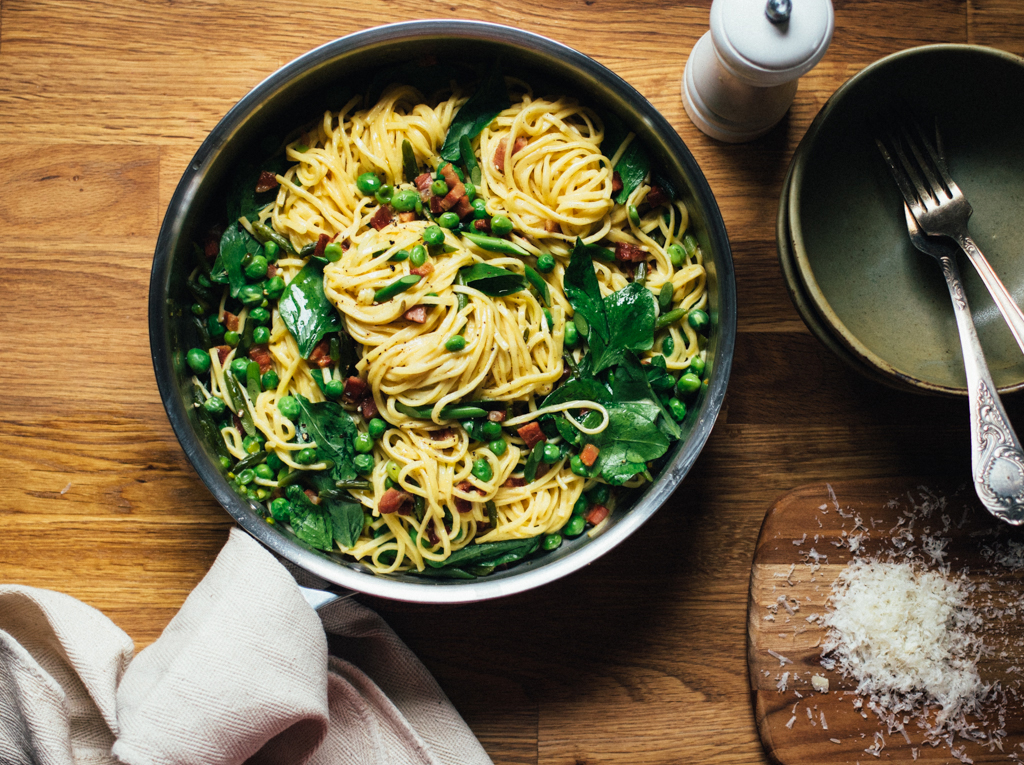
There are a few weeks in early summer, during which we can briefly indulge in fresh shelling peas. It’s not that I have anything against the frozen kind, I just want to remind you to keep an eye on when they arrive, fill a big bag of them, and enjoy the sweet and tender morsels. They’re an ephemeral pleasure of summer that just shouldn’t be missed.
There are 3 different pea varieties growing in our garden, and it wasn’t until we started growing them, that I learned a few new things about peas. There are couple of days in a shelling pea pod’s life when it’s mature enough for the peas to be plump and juicy, but young enough for them to be sweet and tender. Catching a pod during those few days is like striking gold. The shelling peas at the stores and markets, as delicious as they are, are usually a little bit past that prime. Even garden peas get lost in their own leafy jungle all the time, and what you end up with are larger peas that almost entirely fill their pod, which are no longer as sweet or juicy as they were just a few days earlier. Those ones are perfect when lightly sautéed, as the heat warms them up and brings back some of that tenderness.
Another thing that I learned is that the leaves and flowers of the pea plant are edible as well. Pea shoots and young tendrils are popular at the farmer’s markets early in the season, but leaves of mature plants are also delicious and have a mild sweet pea flavour, lovely as a salad green or lightly sautéed.
Today’s carbonara recipe is pretty close to the classic, made with pancetta, Grana Padano and egg yolks. To celebrate the beginning of summer, I added fresh peas and leaves, along with garlic scapes (flower buds) instead of cloves. I hesitated adding the pea leaves to the recipe, as they’re probably hard to find unless you grow your own peas, but decided to leave them in since they can be easily swapped or omitted. There’s just something really fun about having multiple parts of a plant come together in a recipe that I couldn’t leave behind. Talk about a wild idea of “fun”!
In case you’re reading this later in the season or simply don’t have access to fresh peas and garlic scapes, I’ve offered up some alternatives, so don’t hesitate to give it a try!

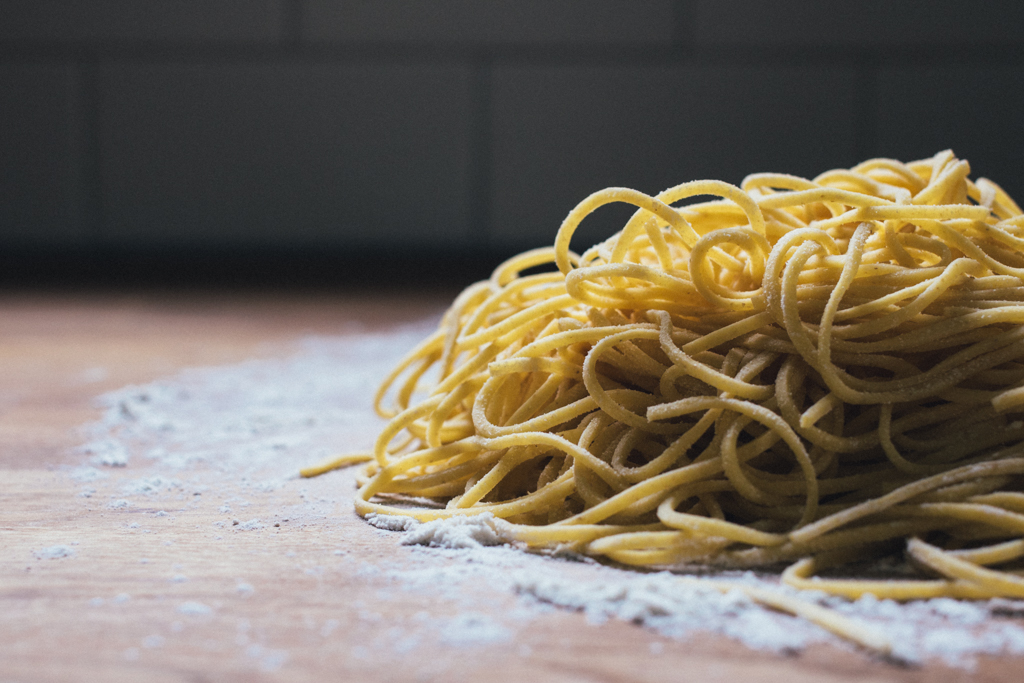
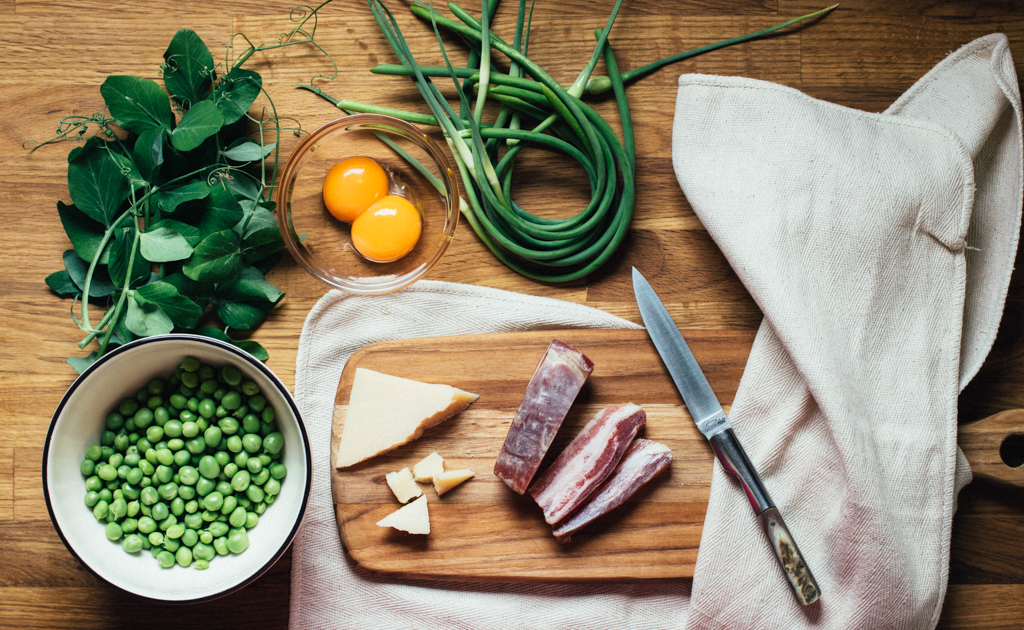
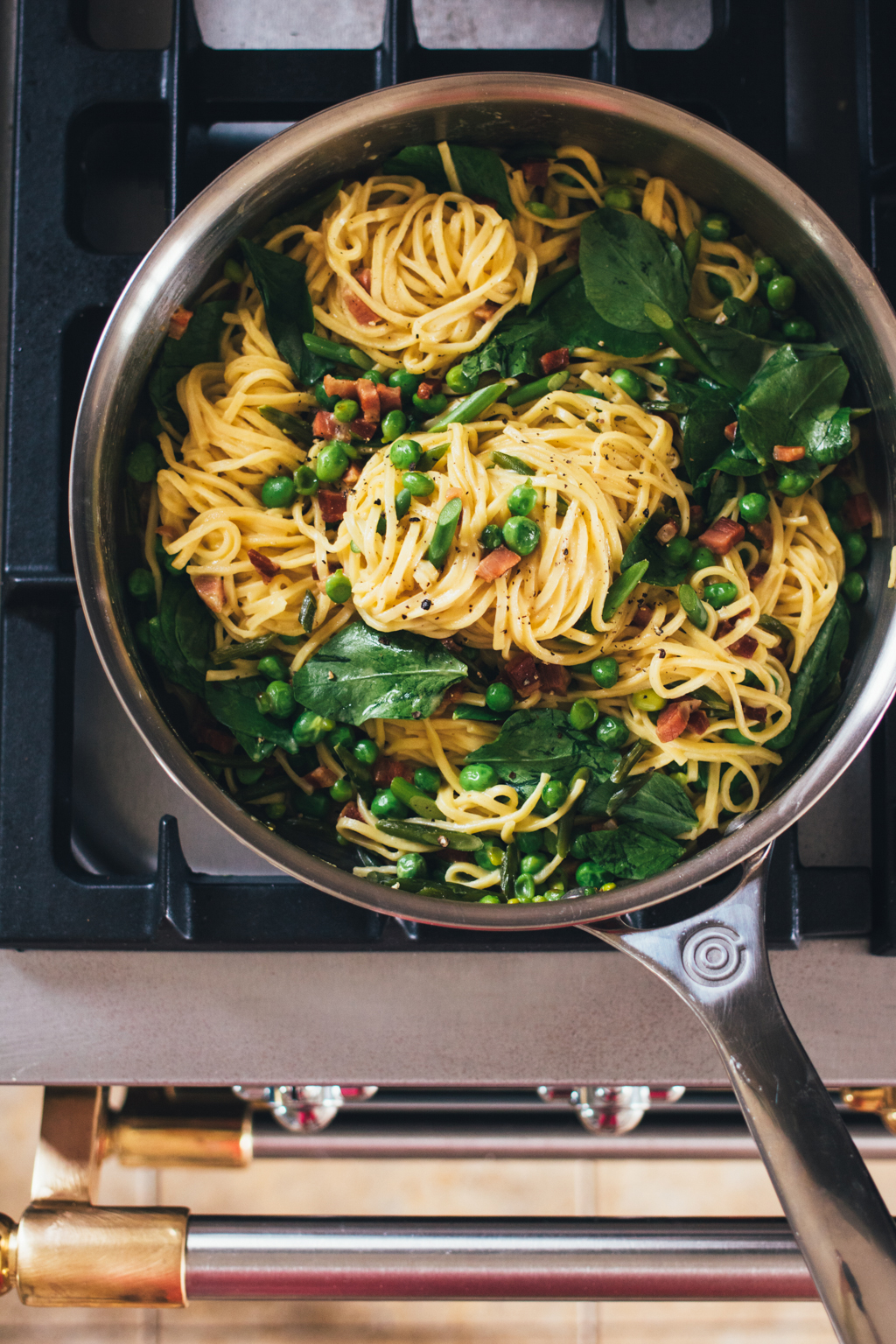
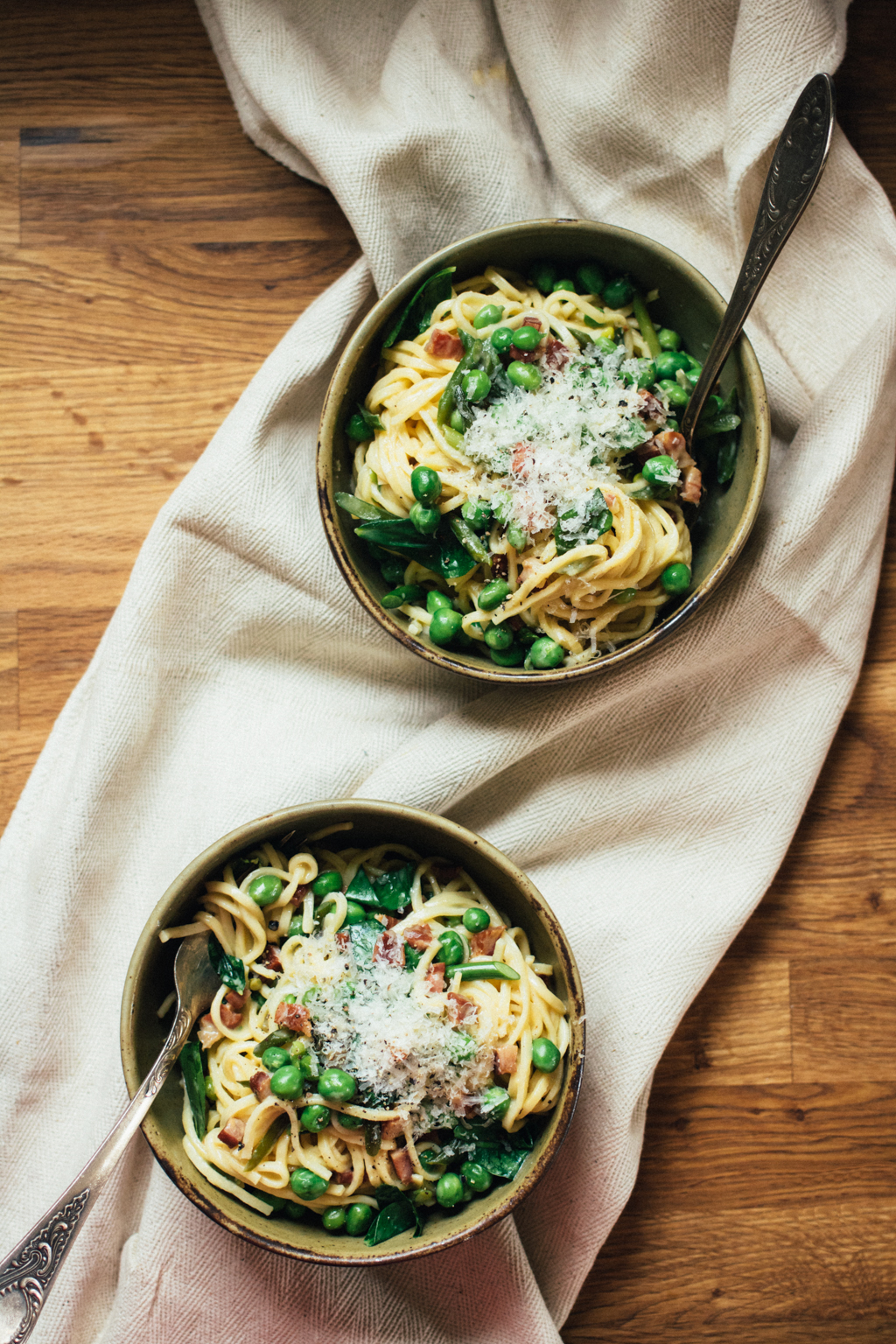

[amd-yrecipe-recipe:21]



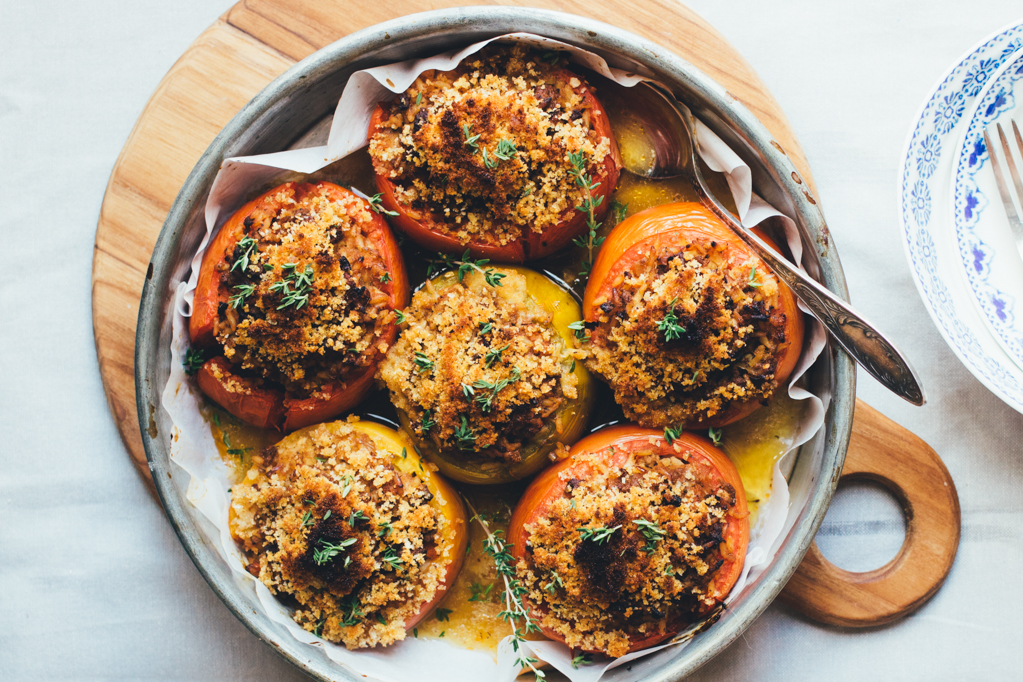
Hello Sofia,
I have made the sweet pea carbonara yesterday night and they were the most delicious I ever taste and quite easy to make. Thank you very much for the great recipe!
Josée, from Canada 🙂